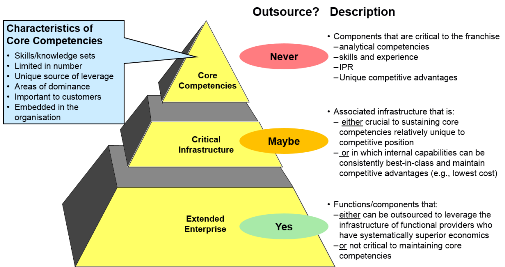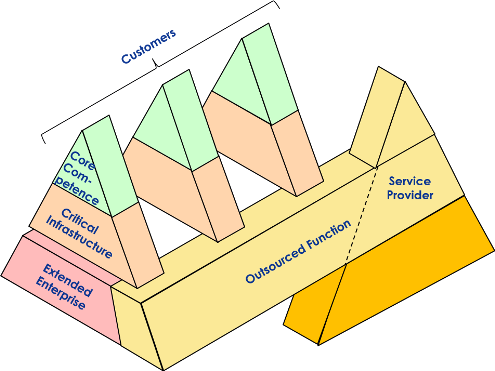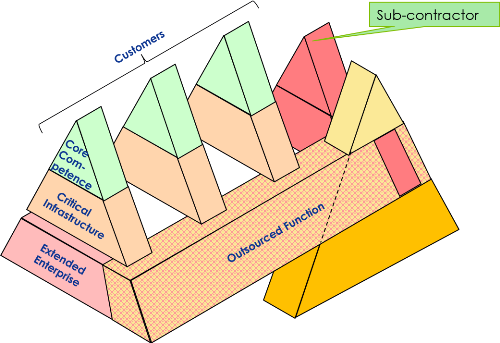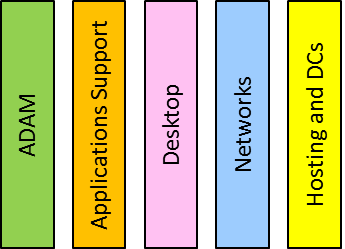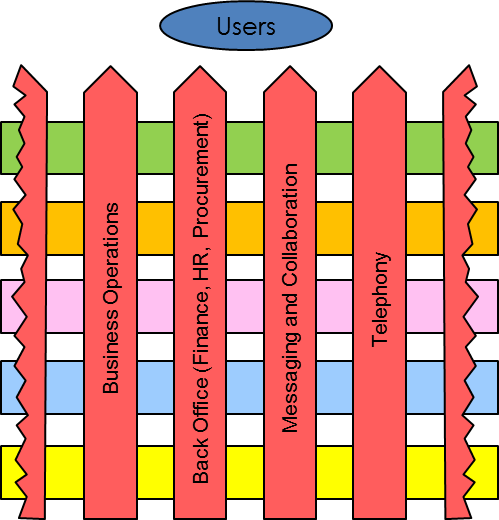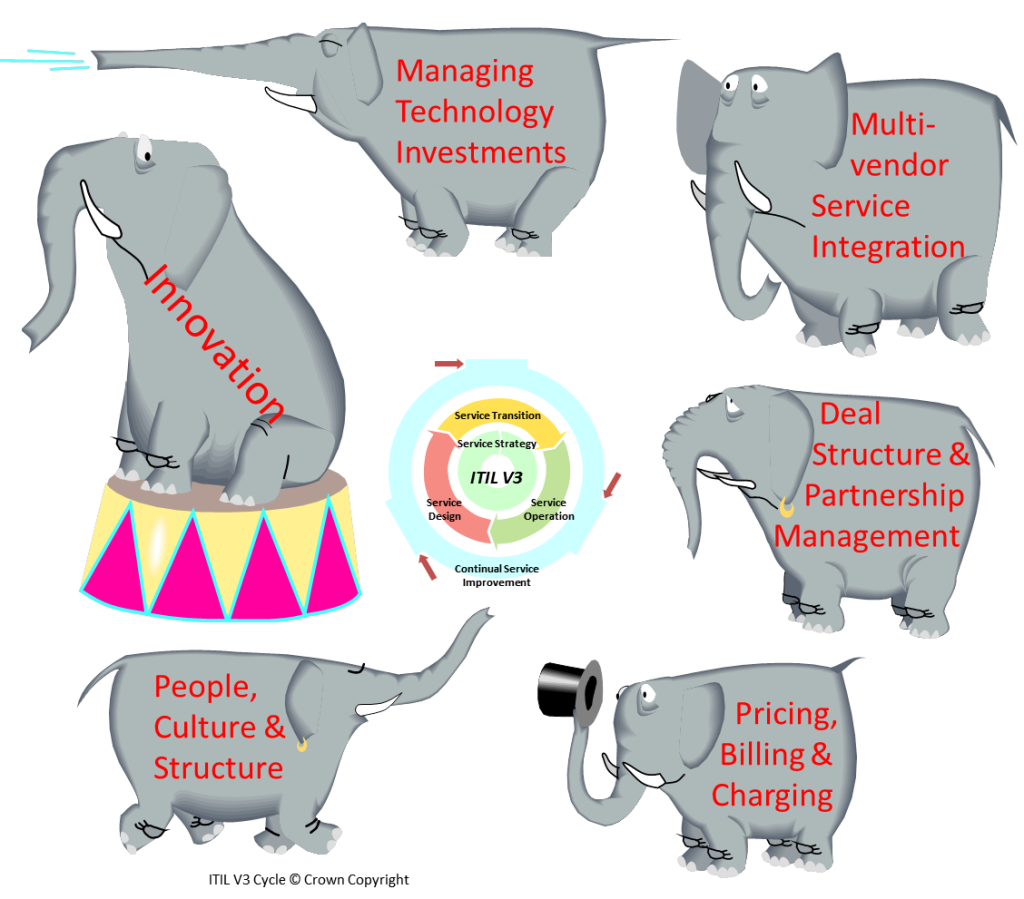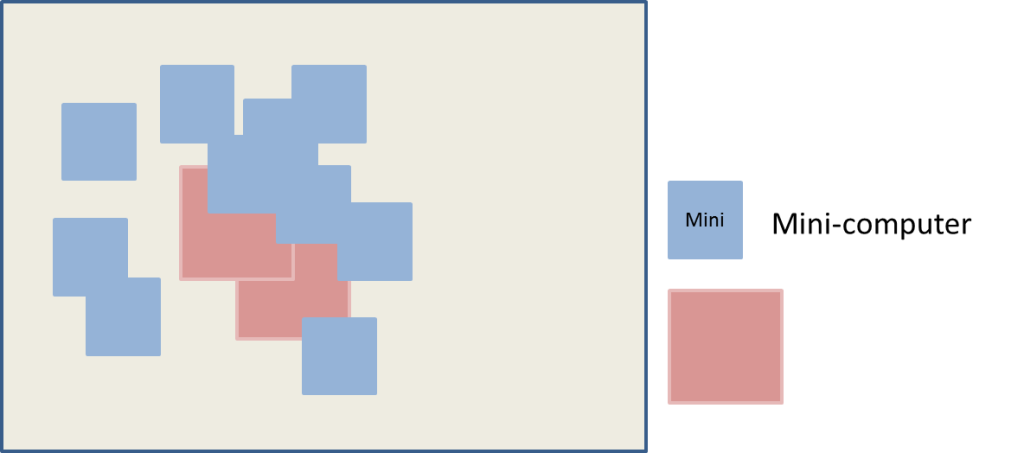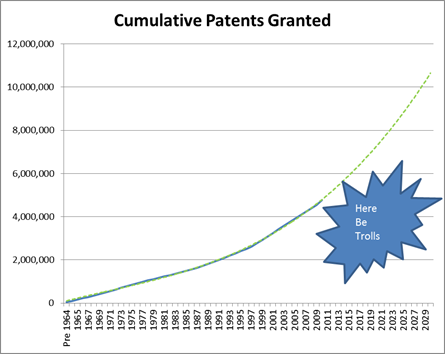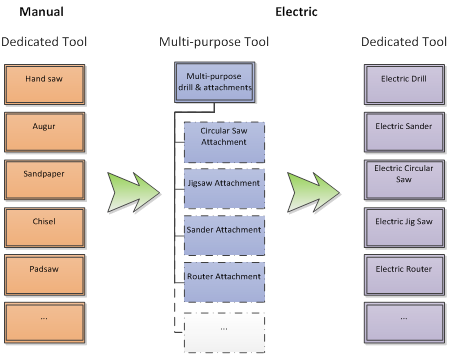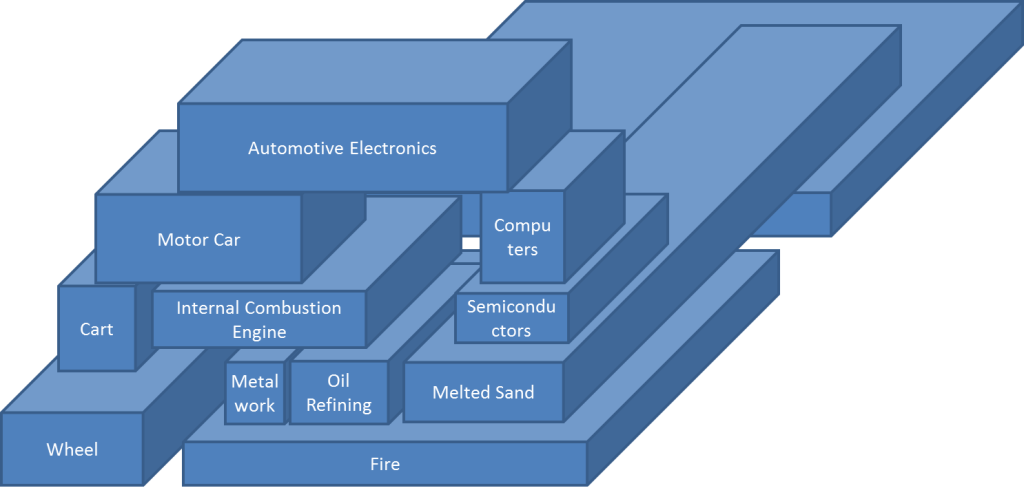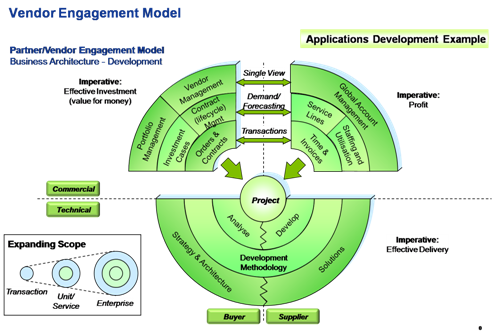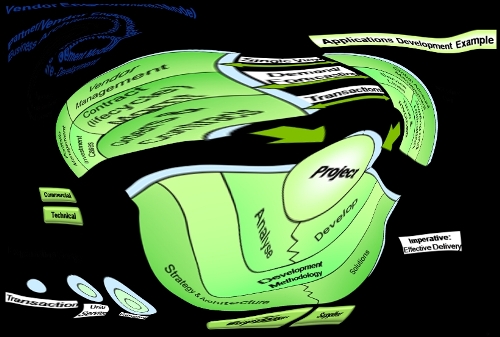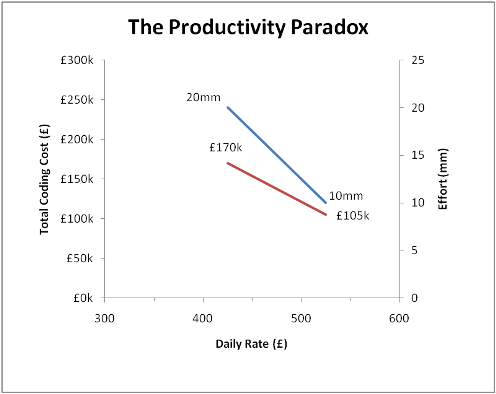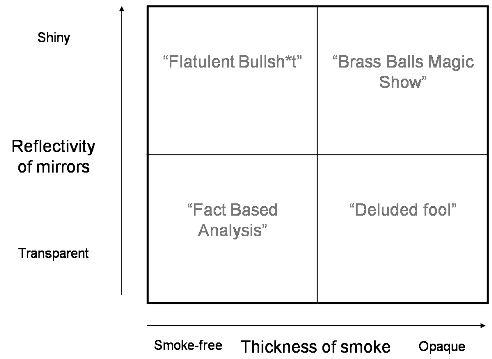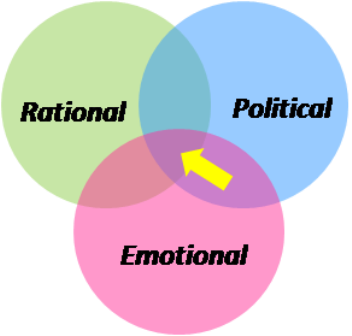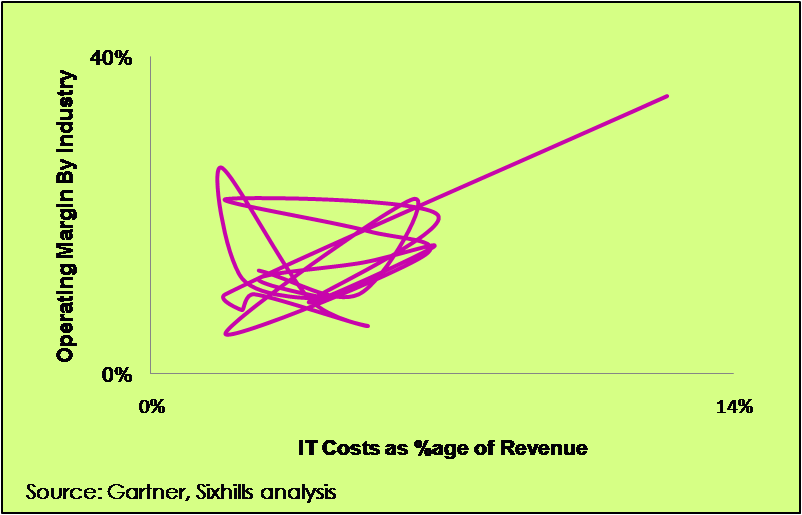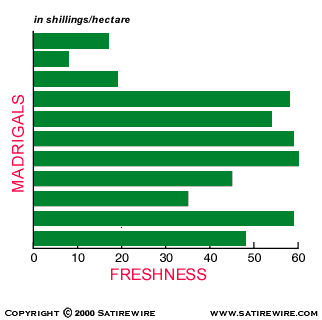A couple of topics popped up together recently to make me think some about Innovation and maybe what might be considered as the “Three Laws of Innovation”
Yes, again, why not, Innovation theory (and practice) is very interesting and a favourite subject area of mine
(Embedding further) Three laws were good enough for Newton, Asimov, Arthur C Clarke, Kepler, and Thermodynamics (Thermo-man?), so is enough for us here
The two topics that pinged on my radar were the DAB radio switch-over and the growth of mobile “apps”.
Very observant, young man, you might say with cutting irony, considering how the latter elephant is not exactly a not a small thing to notice, however, the specific shading that drew my attention is the conflation of “apps” with the relatively absurd concept of the “Consumerisation of IT”, but that is something for another day
As is generally well known (maybe at least to the connoisseurs of such), there are two great peaks of thinking about Innovation (or at least well promoted, anyway), which are strong candidates for Laws 1 & 2:
- Utterback’s theory of “Dominant Design”, and
- Christensen’s “Disruptive Innovation”
I shall ignore Foster’s S-Curves, fun but largely useless without 20:20 hindsight. Although his retrospective observations on historic R&D yield in mature industries were also interesting
It happens that both of these theories are about competition – essentially, quasi-Darwinian “survival of the fittest” ideas in the commercial eco-system. This prompts the thought that ideas are like animals or plants colonising new territory and perhaps supplanting existing species.
Indeed one can conceive the evolution of computers in just such a way, In the first stage, the mainframe mega-dinosaurs lumbered in to empty lands and all five of them hunkered down in their primeval swamp…
The slower and smaller minicomputers grew up and ate some of the mainframe lunch but otherwise nested in vacant slots in the eco-system…
Then the nimble and populous Personal Computers burst on to the scene and set up home next to the others, but also occupy some completely different space…
And most recently, the little amoebal-mobile devices sneak in, erode some of the desktop territory but also set home home in a new country (and they opened a shop too, well, a marketplace, and everything)
The point here being that it is not all about competition although this does impact some of the legacy techno-animals but, in many cases, the new mechanisms opened up new territories and enabled some new things.
It should also be observed that Christensen’s theory applies well here as the cost performance of computing has fallen dramatically so that the dinosaur mainframes are now well and truly outclassed by the lower performance systems that came in from underneath, such that, that a typical mainframe is no more powerful than reasonably sized Wintel enterprise server, but about 100 times more expensive to feed and water!
In the model above, although there are some new territories to invade, the spaces between older technologies are getting ever smaller with the “idea-space” becoming ever more congested and the eco-system constipated. The niche features and almost fractal scale of new mobile apps squeezing into uses not previously envisaged…
just how did we ever live before without those iFart apps?
…together with the growing variety of device formats seem to mirror this reducing space into which new things must fit. Just so, oh best beloved, indeed, this is a feature of another evolutionary effect: specialisation.
Tangentially, this notion of congestion does raise the question is that can/will the total “idea-space” fill up?
At the end the of 2010, the US Patent Office (profligate as it is in granting patent “all-sorts” due to its perverse budgeting incentives) records shows that there were 4,767,685 utility patents (broadly, “inventions”) granted in the 47 years between 1963 and 2010, and the annual rate of grants is increasing. If you project the growth curve (it is a good fit for a third order polynomial), then in just the next 20 years, the number of utility patents will double to over 10 million…
…something is going to break…
Consider, for example, the evolution of electric tools, for example, a thrilling topic perhaps of rather particular interest, but well known to DIY old-timers.
In the early days, a power drill was a treasured item, costing a kings ransom to buy, and then enhanced by the ingenious design of various add-ons that allowed the drill to power other devices. However, the combination tools were rather average at the job and you spent ages swapping attachments to get a job done.
Now, the cost of base motor-drive parts has reached the point (relative to average income) that dedicated tools are generally in B&Q and all good local stockists (yes, even here in Lincolnshire). The evolutionary generations are broadly thus…
….and the key point is here that specialisation has followed an age of standard/generic, multi-purpose designs.
On the topic of power tools and attachments, we shall not dwell on a very dark DIY episode many years ago, when one gimlet sharp child of mine watching out of the window said, “Mummy, why is Daddy hitting that piece of wood with the jigsaw?”. Gilly wisely closed the curtains and drew attention away from the gathering storm clouds outside, &%@+^$(&^%$%$%^^%&$…
In the evolutionary context, the thin-client Internet browser has much in common with the 1970s Black and Decker drill, it performs some functions well (the hole-making ability) but does others really badly. The central management of pages on a web-site and server push for software add-ons is very good but, in contrast, browser-based transactional applications are appallingly bad (vide the immensely frustrating and totally unacceptable experience of the https payment page in a checkout process that displays “page not found”, cue lost or duplicated orders and payments). In other words, a very poor substitute for a properly constructed fat-client, event driven, distributed application
As an aside, the nineties/noughties Browser can be considered an example of the “When you’ve got a hammer, everything looks like a nail” principle, graphically:
The pendulum is now swinging away from the generic macro browser to micro apps as fat clients, with a huge range of variety, diversity, and utility. Whilst there is a potential for a tremendous mess and confusing mishmash, some of the previous lessons have (fortunately?) been enshrined within the application architectures with common frameworks and interfaces (e.g., Android security permissions and sharing” model) and UI design (e.g, Windows Phone 7 Metro style guide)
Considering that “apps” are no more then evolved, differentiated versions of web-pages, recasting Apple’s trademarked bon-mots “there’s an app for that” back in time becomes “there’s a web-page for that”….
Not so impressive, but invokes a scary vision that there are over 20 billion pages indexed on the surface of the WWWeb, and many more in the deep, suggesting that if even a fraction of the pages and their features were to escape as mobile apps, then there could be millions, if not, billions of apps to come, and then die on our phones like the husks of a defeated blue-bottle infestation
So what about the DAB switch-over, I hear you cry, what does this have to do with the price of fish? Well, DAB is an example of a somewhat different trend of technological sophistication, and growing complexity.
A quick trip to the dictionary confirms that “Sophistication” and “Sophistry” have the same root in the Ancient Greek word for wisdom (σοφία, sophia) which should be a good thing, you might think. However. the fallacious, specious and dishonest taint of sophistry slops over into a pejorative meaning, and so your average fashion-victim socialite may be unaware that being called “sophisticated” is not cool and an oh so subtle insult!
Unlike the rather simplistic two-dimensional competitive territory model above, of course, the “idea-space” is much bigger and more multi-dimensional. Consider here an abridged picture of the evolution of the modern auto-mobile, from fire and wheel to pinnacle of multiplexed CAN-bus wiring and other goodies that can no longer be fixed with a few Lucas connectors and the ubiquitous half-inch spanner of my youth. Each generation of innovation is built on the foundations of previous, and also mashed up from wildly different sources to build a pyramid of complexity
So. back to DAB, in my mind which is tuned always to consider contingencies, it is a comforting thought that when civilisation falls and we are hiding from the hordes of flesh-eating zombies, we can at least make an AM radio from a handful of salvaged components, whereas DAB FM is at least two orders of more complex – no, it’s just a recipe of the end of humanity as we know it.
So drawing this monologue to a close, which Innovation mega-theory would make a good candidate to sit in a trinity of the Laws of Innovation together with with Dominant Design and Disruptive Innovation?
Might be interesting to draw in something around that is not just about competition as the other two, but perhaps combination / complexity. Food for thought and an ongoing search, I think.


